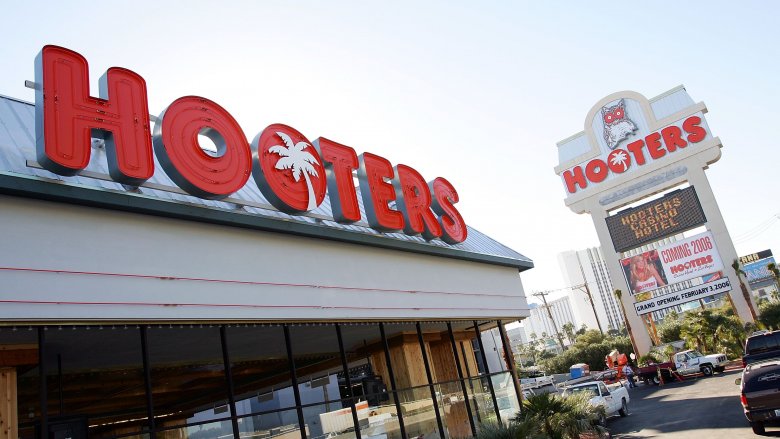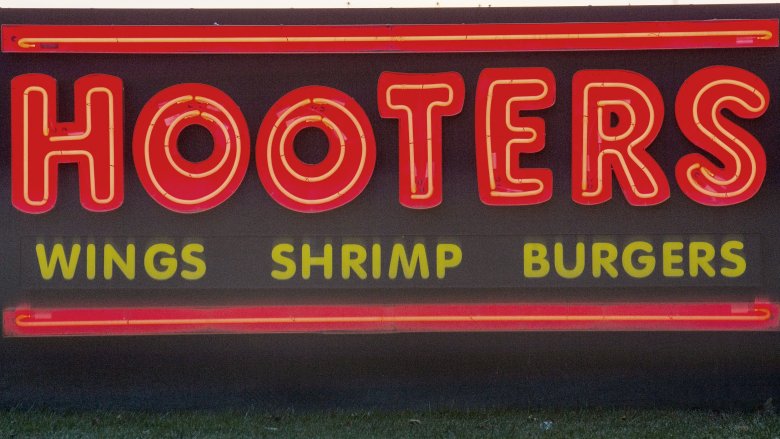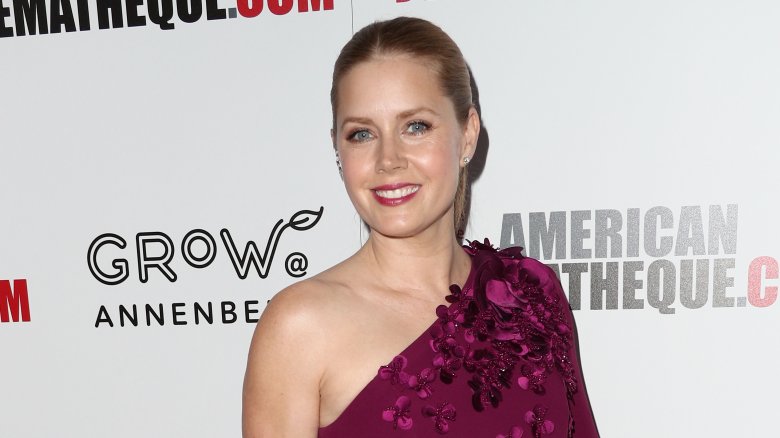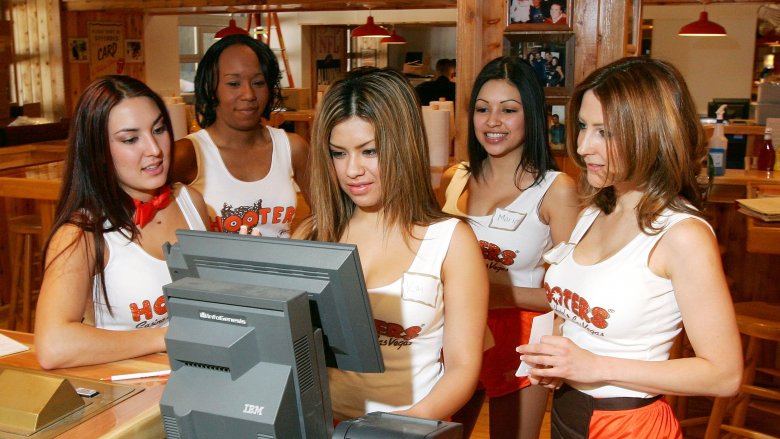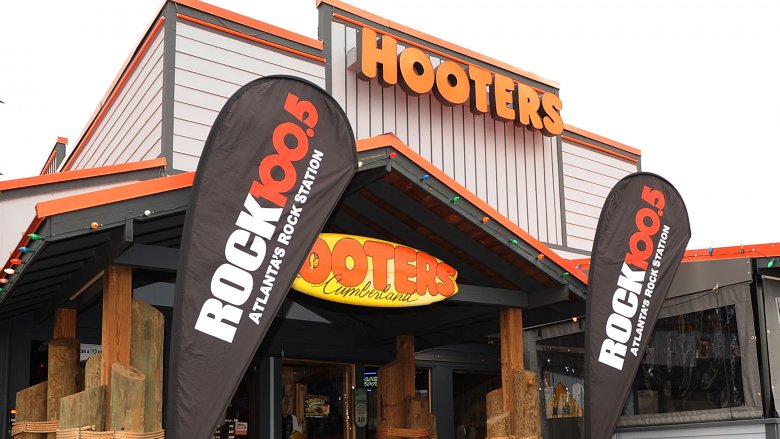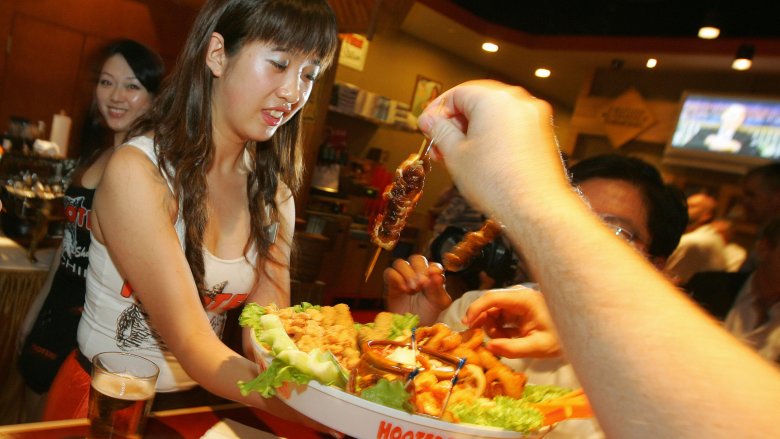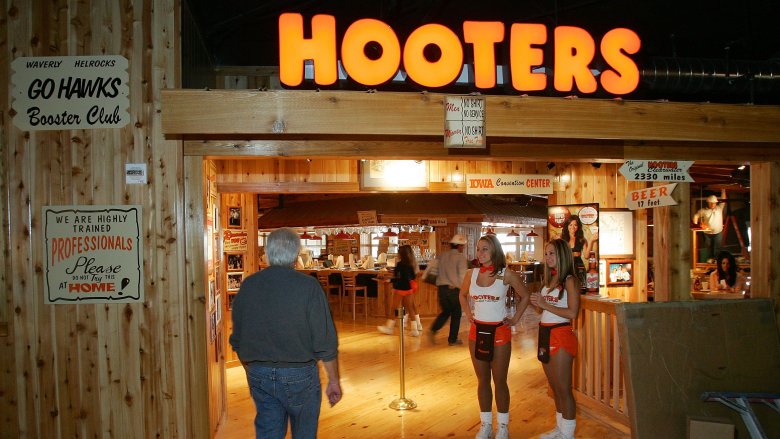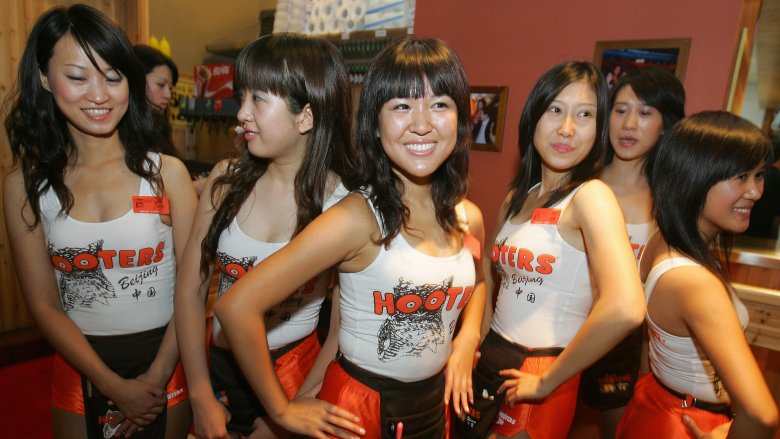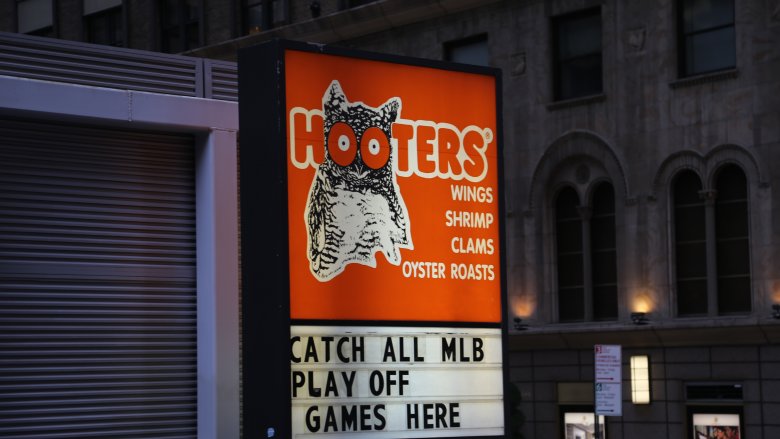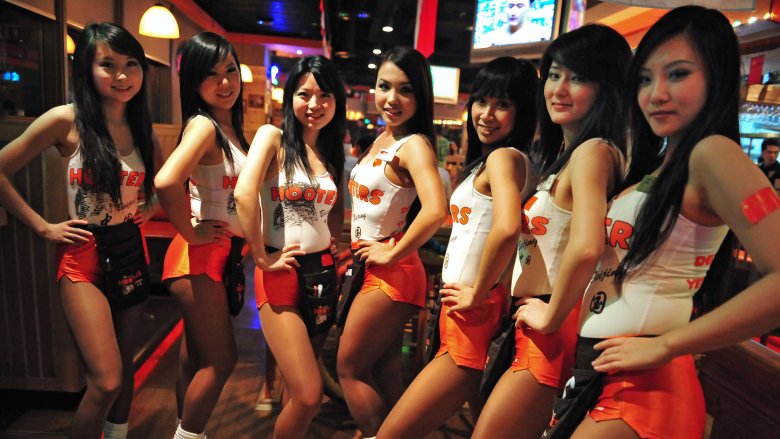The Untold Truth Of Hooters
There's a good chance you've been to a Hooters or two — even if you won't admit it. And even if you really haven't been there, you probably know all about the restaurant chain.
Since opening their first location in 1983, Hooters has become a cultural icon of sorts. And as with any place of legend that's been around for quite awhile, there are a lot of misconceptions and misunderstandings about the ever-popular chain of restaurants. You might think you know all there is to know about the franchise, but there's a lot more to it than Hooters Girls, pints of beer, and chicken wings. Some of it's good, some is bad... and some will probably just leave you scratching your head. It's time to get past all the rumors and discover the truth about this famed chicken spot. This is the untold truth of Hooters.
Hooters is making their food more easily available
Hooters knows the revealing uniforms of their waitresses don't appeal to everyone, but even if their environment isn't appealing, the chicken wings might be. "Many people wouldn't step foot in our restaurants, but they want our product," said Hooters' Chief Executive Terry Marks. In order to broaden their client base, the franchise announced it was expanding its delivery and pick-up services in January 2018.
"Now if your partner sees a credit card charge that says Hooters, you can say it was delivered," said Clark Wolf, a restaurant consultant.
A lot of celebs got their start at Hooters
The restaurant has been a launching pad for many now-famous celebrities who worked there before they got their big break. Former Hooters Girls include actress Naya Rivera and model Samantha Burke.
Actress Amy Adams also worked at Hooters, first as a hostess when she was 17 and later as a waitress. Adams told Vanity Fair that she only made it three weeks as a waitress, having "learn[ed], quickly, that short shorts and beer don't mix."
"The nicest guy walking in is not necessarily the nicest guy after two pitchers of beer," said Adams.
Hooters is exempt from the law
A class-action lawsuit was brought against Hooters in the '90s, alleging discrimination in their hiring policies. The lawsuit was filed by several men who had been denied jobs by the company. While Hooters paid out a total settlement of $3.75 million and agreed to open up more jobs open to any gender, they were not ordered to hire men as wait staff.
David Sherwyn, a law professor at Cornell University, explained the loophole to Business Insider. While gender-based hiring is generally not allowed under the law, Hooters claimed that hiring women as Hooters Girls is a necessary aspect of their business model. "While we offer world famous wings and burgers, the essence of our business is the Hooters Girl and the experience she provides to our customers," said Hooters in a statement. "Hooters Girls are entertainers. They audition for their roles and, once hired, they must maintain a glamorous appearance, and sing, dance and engage the customers to provide a unique Hooters experience."
Hooters got their name from a celebrity
For years, the founders of Hooters insisted that the name of the restaurant came from the owl in the logo, but everyone knew better. In a 2013 interview with the Tampa Bay Times, they revealed where the name really came from.
"Back then, there wasn't all the political correctness," said co-founder Ed Droste. "Steve Martin had a comedy record out with a fabulous bit where he talks about all these things you should love and that you should refer to these [motions to chest] as 'hooters.' We just kind of lightheartedly took it and threw it around."
"We all fell in when we heard it," added co-founder Dennis Johnson.
The most popular attraction at Hooters isn't what you think it is
While many people might go to Hooters to look at pretty women, a lot of clients really are drawn in by the food — especially their chicken wings. While co-founder Ed Droste admitted that Hooters wasn't the first to serve the boneless chicken wing, he noted they did help to popularize them. "Back then, wings were a throwaway," said Droste. "No one served them anywhere."
Since the restaurant opened in 1983, chicken wings have become a staple in bars everywhere, and still count for a large portion of Hooters' sales.
Their success of Hooters was a fluke
The founders had no idea what they were doing when they opened Hooters. None of them had been in the restaurant business before. "We were six clueless knuckleheads who called ourselves the Hooters Six," Ed Droste told USA Today. "We wanted to open a neighborhood joint with a beach theme — that we couldn't get kicked out of."
Droste said that on opening day, he had to call a friend to show the crew how to light the fryers. They also broke the law that first day. "I paid two fake cops to bust one of my partners because we didn't even have our beer license yet," said Droste.
Hooters employees can get tuition assistance
Hooters offers excellent benefits to their employees, including help with paying for school. Courtney Dietz, who worked for Hooters for several years, told Cosmopolitan about her experience working at the restaurant. "Hooters helps pay for books and schooling, so it's really awesome," she said. "You have to work up to it. If you're there for a year or two, they offer scholarships, too. My managers would let me do homework in the office as long as I was taking care of my tables."
Hooters used to have a syndicated show
In 1987, Hooters branched out into television. Hooters Nite Owl Theater, starring the first-ever Hooters Girl, Lynne Austin, quickly became a fan favorite. It was syndicated in 13 markets across the country, and eventually renamed Hooters Movie of the Week. Originally intended to feature Hooters Girls introducing movies, it soon expanded to include "Saturday Night Live-style comedy sketches and political skewers," according to their website. The show remained on the air until 1995.
The times are changing for Hooters
Hooters' business model has proven to be successful for more than three decades, but nothing lasts forever. Lately, they've had trouble gaining a following among the millennial generation, causing a dip in sales. This could be for a couple of reasons. Millennials are less likely to frequent casual dining chains than people of their parents' generation. They are also "less interested in breasts than their elders," said Business Insider, which does not bode well for a casual dining chain which entices many of its customers with the cleavage-baring uniforms worn by their servers.
Millennial attitudes are a big change from previous generations, and are forcing Hooters to rethink their brand. The franchise is working on expanding their menu and updating their decor to appeal to the younger demographic. "For years they've only been working toward Generation X, but now they need to try to get millennials to come through the doors," Darren Tristano, who works for a food industry consulting company called Technomic, told Time.
